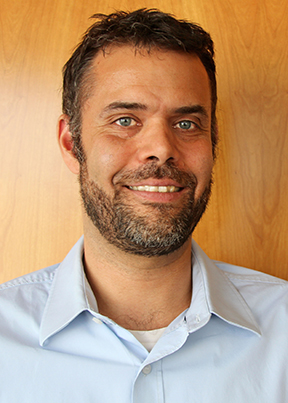
Professor Kael Hanson has just been appointed as director of WIPAC and director of IceCube maintenance and operations, as well as professor of physics at the University of Wisconsin−Madison. He will succeed Jim Yeck, who left Madison more than a year ago to lead the construction of the European Spallation Source in Lund, Sweden.
“This has been an incredibly successful year for IceCube,” says IceCube principal investigator Francis Halzen. “Kael is the right person to lead us into a bright future building on our recent discoveries.” Prof. Halzen has been acting as the WIPAC interim director since Yeck’s departure.
Hanson comes to WIPAC from the successful astrophysics group at Université Libre de Bruxelles, in Belgium, which he has led since 2009. But he is not new to Madison or to IceCube. Hanson had previously worked at UW–Madison from 2002 to 2009, when he played a major role in the construction and operation of the IceCube Neutrino Observatory, at times leading the data acquisition team, the detector operations group, and the design of the digital optical modules.
“I’ve been with this project for 14 years. IceCube has been a big part of my life,” says Hanson. “Thinking back on testing photomultiplier tubes and supervising students, my role in IceCube has been evolving over time just as the project itself has evolved. I’m excited to take on my new role leading WIPAC and contribute to IceCube in a different way.”
Building on IceCube’s discovery of cosmic neutrinos, Hanson will lead the next phase of the center and the IceCube project. Extensions to the IceCube observatory would make it possible to explore cosmogenic neutrinos at the highest energies and determine the neutrino mass hierarchy.
“We want to get more science out of the South Pole and build on the tremendous asset that we already have there,” Hanson says about the proposed upgrades. “That’s one of the challenges to expanding existing projects—it’s hard to follow something that’s already been done so well.”
ARA as well as DM-Ice are other projects that might continue their deployment in the Antarctic ice in the near future, following the great performance of their pilot detectors. In the meantime, HAWC is already taking data in Mexico, and CTA will soon be moving to the construction phase. Plenty of new challenges and hopefully amazing science are in store for Hanson and the WIPAC team.
